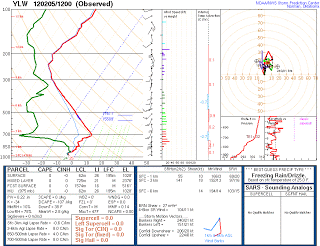
Star Valley Winter Inversions
Once again this week Star Valley(as has been the situation several times this winter) is being affected by a strong temperature inversion. Since instrumented balloons sample the vertical structure of the air mass at widely spaced locations(the closest sites to Star Valley are Riverton and Salt Lake City), the only real way to detect the inversions is by sampling the temperatures at varying elevations around the valley.
As an example of a vertical temperature profile that is similar to the one over Star Valley under these conditions, is the radiosonde released a couple mornings ago at Kelowna in southern British Columbia.
 |
| Kelowna, British Columbia 1200GMT 2/5/2012 |
In this case the temperatures were warmer at 700 mb(10,000 feet) than near the ground.
Following are the meteograms of temperatures for the last 5 days(Feb 3-7) of observations from several weather stations in and near Star Valley.
The Afton station has been most affected by the persistent inversion
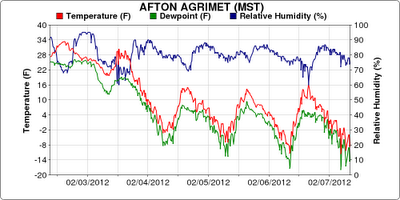 |
||
| Afton Temperatures Feb 3-7 2012 |
It is apparent that the inversion became established the night of February 4th and for the following three mornings minimums dipped to well below zero. During the afternoon, even under sunny conditions, temperatures could only climb into the mid teens.
A similar scenario is observed by the station at Thayne Elementary School.
 |
||
| Thayne ES Temperatures Feb 3-7 2012 |
Once the inversion was established on the morning of the 4th, minimums have been well below zero with afternoon highs briefly reaching to about 20 above.
At the Star Valley Ranch station which is about 300 feet above the valley floor as well as adjacent to the west slopes of the Salt Range, temperatures typically are not as cold under strong inversion conditions.
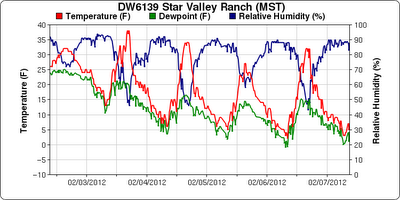 |
| Star Valley Ranch Temperatures Feb 3-7 2012 |
Not only are nighttime minimums not as cold as the valley floor(lowest observed was 3 above)but the sun is more effective in warming the afternoons with maximums running 15-20 degrees higher than at the Afton Station!
The Box Y station, which is located in the Greys River Canyon, is interesting as well. While strong nighttime inversions develop due to the sheltering affects of the Wyoming/Salt Ranges, the canyon is considerably narrower than Star Valley, which allows the daytime heating to more effectively remove the inversions.
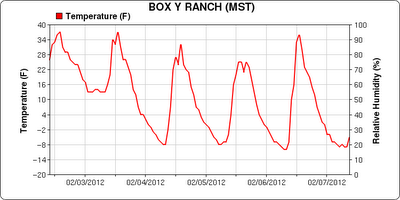 |
| Box-Y Temperatures Feb 3-7 2012 |
While it gets as cold as the coldest Salt River Valley locations at the Box Y Station, afternoon temperatures have been near or above freezing, similar to Star Valley Ranch.
During the morning hours there have been areas of fog trapped under the inversion. An example of this is the photo taken Sunday morning near Grover where the temperature at the time was minus 8F.
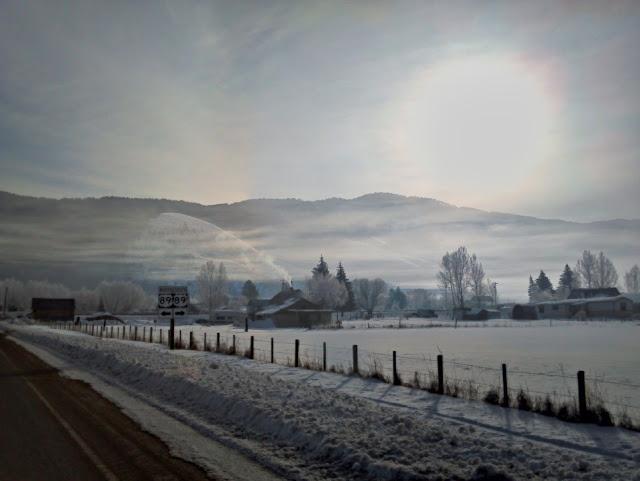 |
||
| Sunday morning February 5 2012 |
In this photo is visible the thin layer of fog. Also visible is the accumulated Hoar Frost that has been deposited on the trees by the fog. The fog has been much thicker during the mornings at times near the Salt River.
By the end of February the sun will be providing sufficient insolation that nighttime inversions will weaken considerably during the afternoon.